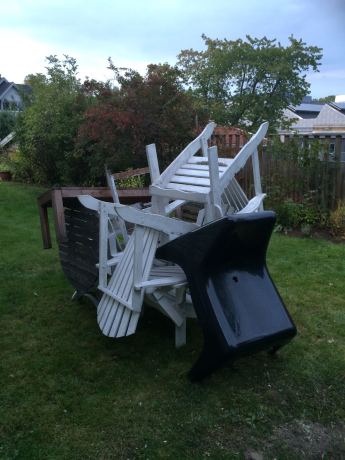I think the course have been intensive and challenging in many ways. For me it feels that I have running around in different landscapes and not for a minute take a break to breath ;).
To work more with open educational it´s a good idea to start with a course like ONL, to bring it all together.
It´s good to put us in smaller groups and let us discuss and reflect over the topic and the questions we try to find an answer for. From this we have to figure out what kind of digital tools we can use for this topic and share it with the other groups. I don´t say it´s easy. Many questions, how and were we can meet is important. The best time on the day for our group to meet have been in the evenings. The sound is also an important issue, so we can here each other when we talk. To see who is on the other side when you have a meeting also gives you a feeling of a person of flesh and blood. Sometime it has been hard for me to here all of the conversations depending on a sparkling sound, difficult for me to participate in natural way. This must be in some way the concept of community that Wenger talk about (Wenger, 2010). We are in different kind of relationship to people, to the world. This means we are human beings like social persons in a social word. The concept will than be constituted with each other, the social and the individual (Wenger, 2010).
It was interesting when we build up our course in ”Short Guide to Harvard Referencing”. We used the TedEd to put different kind of material. I have never used those kind of open tools before, it is very basic but you get an idea how you can design a course. With this we used a model called ADDIE-model. I think it is a good way to sometime use a model to go through what will happened in the course. How different outcomes and assignment take place in a learning situation will then be visible. Often we follow the traditional way and do not really think why we do like we do, like the hand over.
I think we have an idea about digital tools and how it could be to work in an open education minded context, learning in communities, design for open online and blended learning, digital literacy, open webinar, tweet chat, discussing and sharing etc.
One challenge for me in the course was also to talk and write in english, I hope I`ve attained a higher level both in the language and as an individual in a social context. I will end this blogg and give a quotation from Wenger (2010),
”Over time, a history of learning becomes an informal and dynamic social structure among the participants, and this is what a community of practice is.”
References
ONL162 PBL8 (2016, November 28) Lesson created by ONL162 PBL8 [link]. Retrieved from https://ed.ted.com/on/3yc48Uuy/edit
Overview and schedule ONL162 (2016) Open Networked Learning, ONL [link]. https://opennetworkedlearning.wordpress.com/topics-and-activities/overview-and-shedule-onl-162/
Salmon, G (2013) The Five Stage Model. Retrieved 2016 November 8 from http://www.gillysalmon.com/five-stage-model.html
Wenger, E. (2010). Communities of practice and social learning systems: the career of a concept. In Social learning systems and communities of practice (pp. 179-198). Springer London

Picture: my furniture 2016, author: Pia Palm

Great summary Pia, it was challenging and intense, but we did learn a lot!
GillaGillad av 1 person
Thanks for sharing! That would be also interesting to learn how you plan to implement the gained knowledge? (or do you actually think of implementing it)
GillaGilla